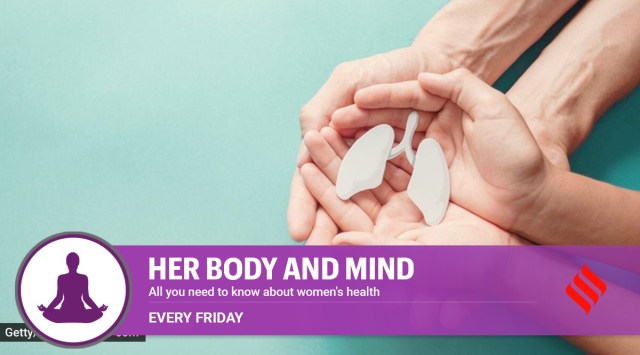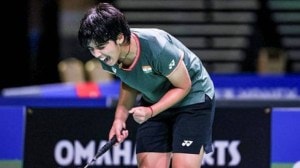Smart diet plan for anaemia: Why you need Vitamin C and must avoid tea and coffee with meals
Practical dietary adjustments can significantly contribute to combating anaemia. Vitamin C speeds up iron absorption while avoiding certain foods with iron-rich meals and staggering them instead can help you reach your goal, says Ritika Samaddar, Regional Head, Nutrition and Dietetics, Max Super Speciality Hospital, New Delhi
 Take foods rich in beta carotene, like beet and red pepper, to improve iron absorption. (Source: Getty Images/ Thinkstock)
Take foods rich in beta carotene, like beet and red pepper, to improve iron absorption. (Source: Getty Images/ Thinkstock) Most Indian women are dealing with anaemia in some form with the National Family Health Survey (2019-21) indicating a staggering 52 per cent prevalence rate. Usually, under-nutrition is the main culprit here, resulting in inadequate dietary intake and malabsorption but it can also be symptomatic of underlying diseases such as Celiac disease, irritable bowel syndrome (IBS) and alcoholism. The good news is that a diet rich in iron is the cornerstone of prevention and management.
The recommended intake for adults is 7 to 18 grams (g) per day. Iron-rich foods include lean meats, seafood, nuts, beans and green leafy vegetables. However, a notable consideration is that individuals who follow vegetarian or vegan diets require approximately 1.8 times more iron than their non-vegetarian counterparts. This is because the iron derived from plant-based sources is generally less absorbed by the body.
Enhancing iron absorption is equally important. One effective method is pairing iron-rich foods with those high in vitamin C. For instance, consuming lemon juice or citrus fruits with meals enhances the body’s ability to absorb iron. Further improvements can be achieved through food preparation techniques that increase iron bioavailability, such as fermentation, soaking and germination. These methods enhance the body’s ability to absorb the iron present in food sources.
Practical dietary adjustments can significantly contribute to combating anaemia:
1. Incorporate Vitamin C-rich foods into iron-rich meals. Pair fresh tomato chutney with palak pakora or dal vada, have an orange juice during breakfast or add lemon juice to sprouts and poha.
2. Consistently include iron-rich foods in daily meals and snacks, such as nuts, seeds and green leafy vegetables. Those into animal proteins can easily integrate chicken or fish into their diet. Soybeans and tofu can be iron-rich protein sources for plant-based diets. While eggs are a good source of protein and do contain some iron, they also can inhibit iron absorption, especially with yolk.
3. Temporarily avoid coffee and tea during meals, as they hinder iron absorption. Consuming these beverages an hour before or after meals optimises absorption. This is because tannins bind themselves to iron, changing the composition of the iron molecules. But they impact mostly non-heme iron, the type of iron found in plants, and not the iron found in animal products, or heme iron. All you need is to stagger consumption in such a way that they do not interfere with your meals.
4. Avoiding iron-rich foods in conjunction with dairy products or high-fibre foods helps prevent hindrances to absorption. Some studies have shown that consuming a meal with up to 300 mg of calcium can diminish iron absorption by 40 per cent. Also, do not take calcium and iron supplements at the same time due to the negative interaction between the two. Smart spacing is the key here.
5. Take foods rich in beta carotene, like beet and red pepper, to improve iron absorption.
6. Add foods rich in folate and vitamin B-12 to support red blood cell production.
7. Try to avoid gorging on pasta and whole grain bread when having iron-rich foods. Its gluten content can eat into your iron levels as it disrupts the absorption of iron and folic acid, which are required to produce healthy red blood cells. Whole grain bread has more wheat phytates that bind to iron (some studies say by up to 90 per cent) present in your digestive system, hindering its absorption in the blood.
The prevalence of anaemia varies across different segments of the population. Among various groups, the rates are as follows: 57 per cent in women aged 15 to 49 years, 59.1 per cent in adolescent girls, 52.2 per cent in pregnant women aged 15 to 49 years, and a distressing 67.1 per cent in children aged six to 59 months.





- 01
- 02
- 03
- 04
- 05


























